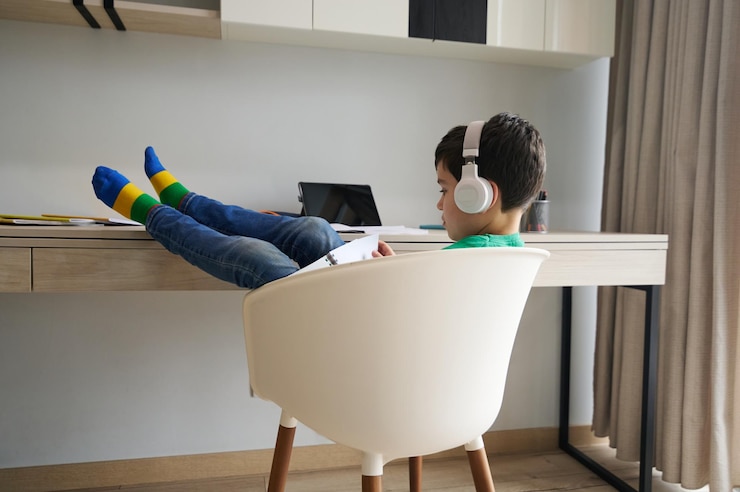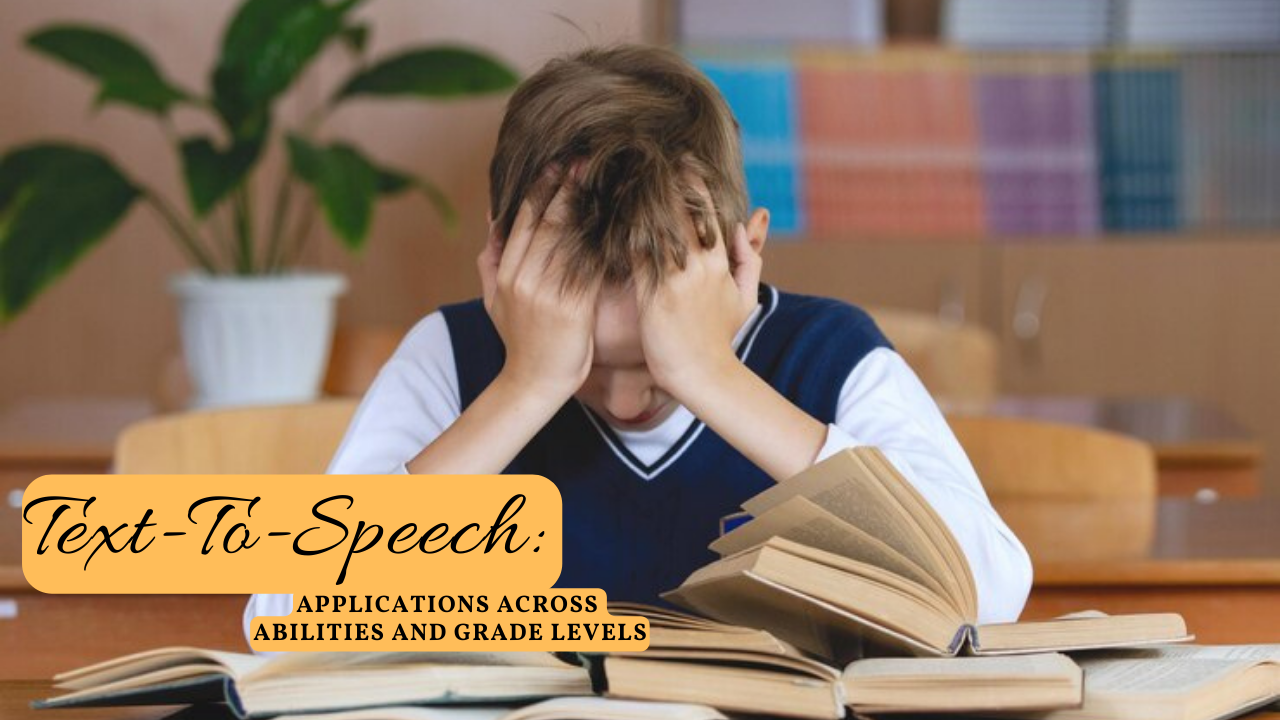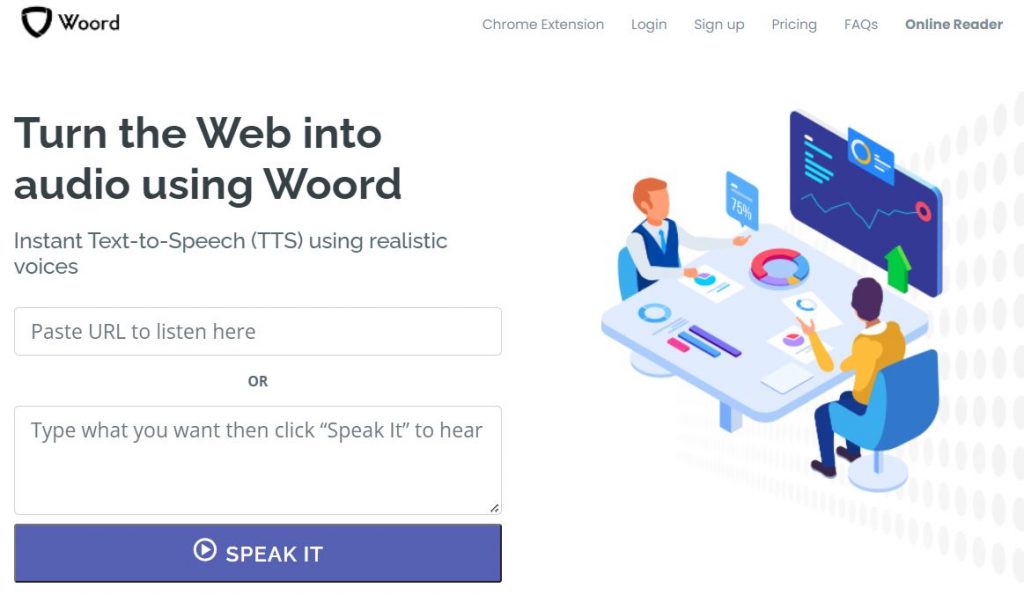Gardner’s theory of multiple intelligences, Miller’s Information Processing Theory and different studies and research that show speech synthesis colliding with education. So, who said AI voice generators do not have applications among children with diverse capacities and ages?
Many students are struggling to read at grade level. Students with learning difficulties, English language learners, inadequate instruction, low attendance, and other variables read content below their grade level. While there are no magical answers to these difficulties, several teachers found text to speech (TTS) to be a useful tool for activities that require reading.
Text to speech technology turns text into audio and sometimes highlights areas of the text as it is read. As a result, a kid can listen to school materials, adjust the synthesised speech speed, stay engaged and focus on the text. In other words, TTS cuts through content boundaries.

To be more specific, TTS helps pupils to concentrate on the content rather than the process of reading, resulting in a better grasp of the topic. This way, it enhances students’ confidence and motivation while also increasing their ability to remember information. Moreover, these assets aid in word recognition and encourage learners to recognise and correct their errors. While some argue that audiobooks, or literature read by voice actors in general, are superior to computer-generated voices, there is compelling evidence that TTS may be a valuable tool for students of all ages.
Due to these benefits this technology has on education, evaluating and choosing accurate text conversion and the quality of AI voices is critical for children’s progress. Not to mention features like Optical Character Recognition (OCR). For that matter, we recommend the following tool:
Woord
Woord‘s voice synthesis creates amazing human-like speech. Its 50 masculine, female, and gender-neutral speakers can talk in 28 different languages and dialects: English, Spanish, Portuguese, French, German, Russian, Turkish, Hindi, Italian, Japanese, Chinese, Vietnamese, Arabic, Dutch, Norwegian, Korean, Polish, Swedish, etc. That makes this software, for starters, a superb instrument for all students.
Furthermore, Woord lets you keep customising your spokespeople. Like most TTS applications, the platform allows you to control the rate of the audio, i.e., speed it up or slow it down. It even comes with an SSML editor to vary the tone by emphasising or whispering, inserting breaks and breaths, and changing the phonemes according to your preferences, among other things. Yet, the advanced audio settings give users the option to select the device profile they prefer for their mouthpieces (e.g., IVR, Smarthome, GPS, to mention a few). That’s taking TTS personalisation to the next level.
And Woord‘s description isn’t over yet. We haven’t even scratched the surface of its capabilities. As a state-of-the-art, full-packed AI voice generator, the software includes OCR technology, MP3 download, and a Chrome extension in the package, which is 100% free! When you set up an account, you have access to all these features as well as 20,000 characters and two audios to use.
To wrap up, TTS will not replace reading in the same way as EduTech will not replace traditional teaching, but it is a tool to consider.


